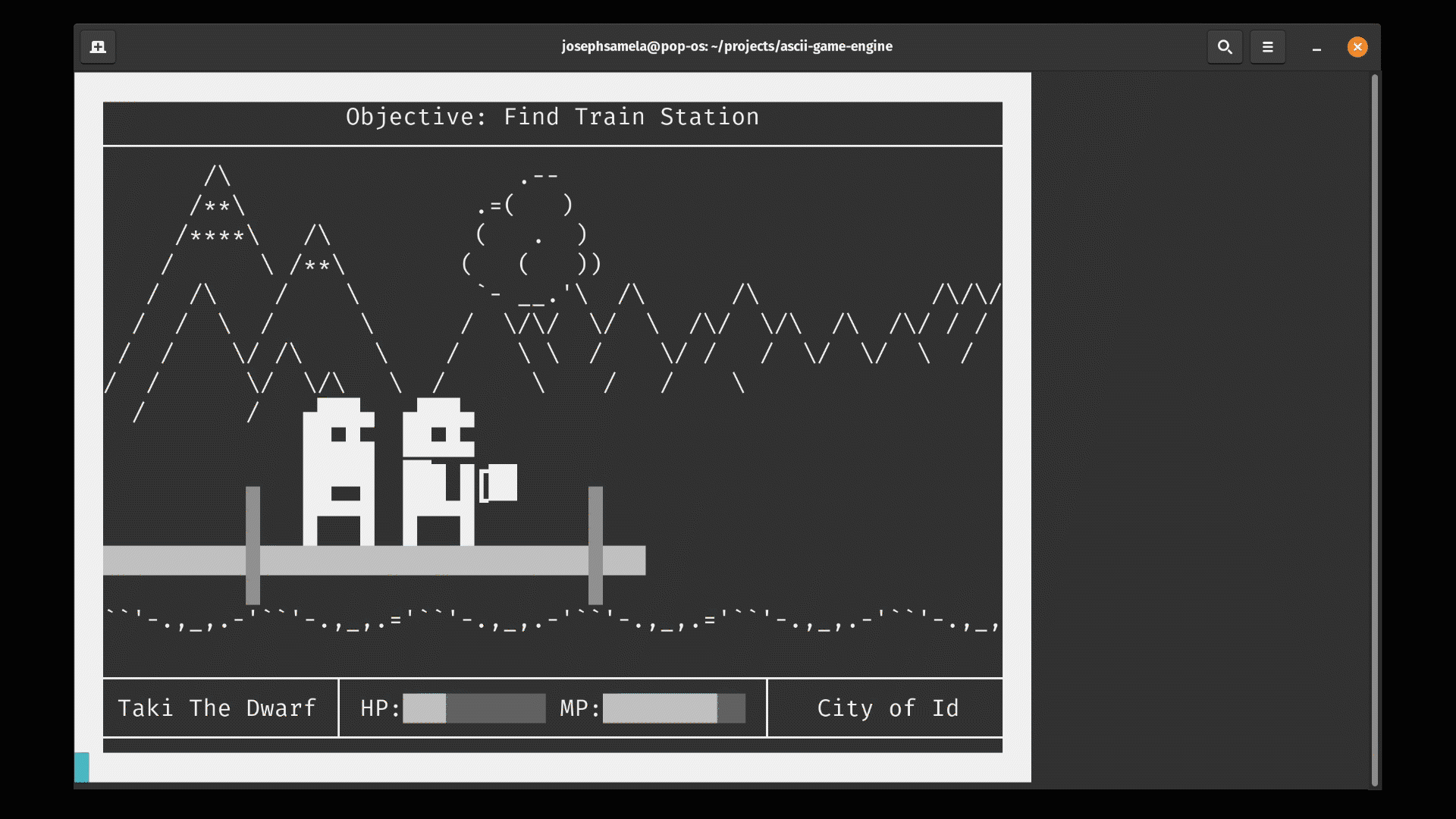JOE MAKES
▒▒▒▒▒▒▒▒▒▒▒▒▒▒▒▒▒▒▒▒▒▒▒▒▒▒▒▒▒▒▒▒▒▒▒▒▒▒▒▒▒▒▒▒▒▒▒▒▒▒▒▒▒▒▒▒▒▒▒▒▒▒▒▒▒▒▒▒▒▒▒▒▒▒▒▒▒▒▒▒▒▒▒▒▒▒▒▒▒▒▒▒▒▒▒▒▒▒▒▒▒
ASCII-GAME-ENGINE
Long ago during a boring meeting I started doodling in Microsoft Notepad. I used the basic ASCII and ASNI characters to draw funny characters and backgrounds…and before I knew it I had the idea for a game. A game rendered entirely with text. I didn’t want this game to be a text-adventure like Zork or have the abstract ascii-graphics from games like Nethack or Dwarf Fortress. I wanted ACTUAL graphics inspired by 2D pixel side scrollers.

That when I started this project! I needed a game engine complete with Textures, Sprites, Animations, Layers, Input Control, etc. capable of rendering everything as text. Currently, this game engine is a work-in-progress! I’ve been having great fun implementing new features and learning game-engine and game-design programming!
Texture
Textures in this game engine are literally TEXT-ures. They’re
literally .txt. files containing the ASCII art. For
examples see the /sprites folder.
Animation
An animation is a sequence of sprites that plays in order to show motion. A better name might be “Animated Texture” because as far as the other engine objects are concerned it is Texture.
Sprite
Almost everything on-screen is a “Sprite”. A sprite displays a Texture or Animation and has a position on screen. Most in-game objects (characters, platforms, props, etc.) inherit from Sprites.
Screenbuffer
Screenbuffers are the canvas onto which individual sprites are drawn. The engine supports any number of screenbuffers to be layers on-top of each other. In my demos, I found four layers to be sufficient; foreground, background, object-layer and ui-layer.
Controller
The controller implements basic input control that works with standard keyboard-interrupts. Works transparently on Windows and Posix.
Site generated 2024-09-20